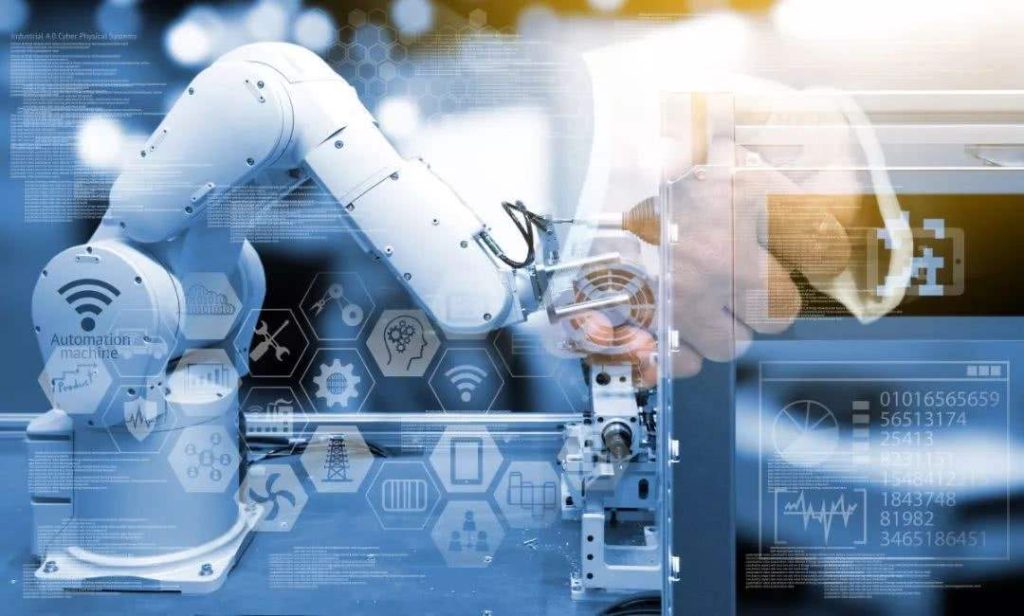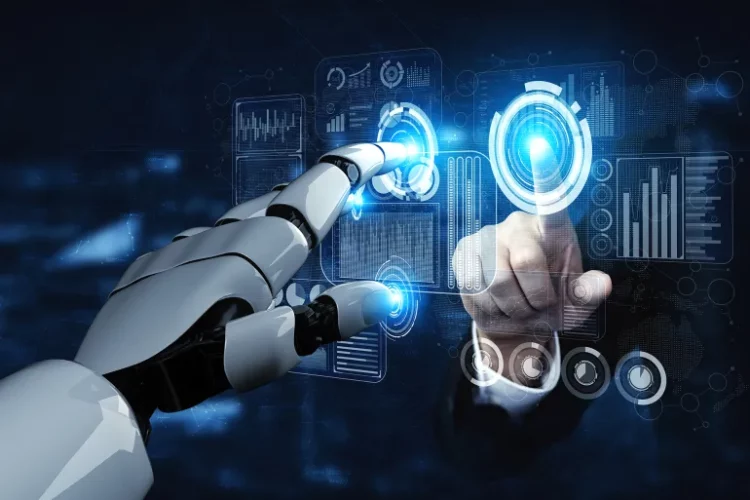Introduction
In today’s increasingly digital world, data security has become one of the most pressing concerns for businesses, governments, and individuals alike. With the exponential growth of cyber threats, data breaches, and fraud, ensuring that sensitive information remains secure and tamper-proof is crucial. Traditional security methods often fall short in addressing the complexities and scale of modern cyber threats. This is where the integration of Artificial Intelligence (AI) and Blockchain technologies can provide a powerful solution.
Both AI and blockchain individually offer robust solutions for improving data security, but their combined use can significantly enhance the capabilities of each technology. Blockchain provides an immutable, decentralized, and transparent ledger that ensures data integrity, while AI can analyze large volumes of data, identify patterns, and detect anomalies in real time. Together, these technologies can create a highly secure and intelligent data environment capable of addressing the evolving landscape of cybersecurity challenges.
This article explores how the integration of AI and blockchain can optimize data security, detailing the benefits, applications, and challenges of this powerful combination.
1. Understanding Blockchain Technology and Data Security
1.1 What is Blockchain?
Blockchain is a decentralized, distributed ledger technology that records transactions in a secure and immutable way. Every block in the blockchain contains a list of transactions, which are verified by a network of participants before being added to the chain. Once a block is added, it cannot be altered, making blockchain highly secure and resistant to tampering.
Key features of blockchain for data security:
- Immutability: Once data is recorded on the blockchain, it cannot be changed or erased. This makes blockchain ideal for ensuring the integrity of data.
- Decentralization: The distributed nature of blockchain means that there is no single point of failure, reducing the risk of cyberattacks.
- Transparency: Blockchain ensures that all transactions are publicly recorded, allowing for greater accountability.
- Encryption: Data stored on the blockchain is often encrypted, providing an additional layer of security.
Blockchain is particularly useful in scenarios where data integrity and trust are paramount, such as in financial transactions, healthcare records, and intellectual property protection.
1.2 How Blockchain Ensures Data Security
Blockchain enhances data security by ensuring that data cannot be altered once it has been written. Each block in the chain is linked to the previous block, creating a cryptographically secure chain of data. If any attempt is made to change the data in one block, it would require altering all subsequent blocks, which is practically impossible due to the cryptographic hash functions that protect the blocks.
Additionally, blockchain’s decentralized nature means that data is not stored in a single central location, making it less vulnerable to attacks like data breaches or denial-of-service (DoS) attacks. Because multiple copies of the blockchain exist across different nodes in the network, tampering with the data would require compromising the majority of the network, which is highly unlikely in a large and secure blockchain network.
2. Understanding Artificial Intelligence and Data Security
2.1 What is Artificial Intelligence?
Artificial Intelligence (AI) refers to the development of systems capable of performing tasks that typically require human intelligence, such as learning, problem-solving, and decision-making. AI can analyze vast amounts of data, recognize patterns, and make predictions based on historical information. In the context of data security, AI can be used to enhance the ability to detect and respond to cyber threats in real-time.
Key features of AI for data security:
- Anomaly Detection: AI can analyze data patterns and detect any unusual behavior or anomalies that might indicate a security breach or a cyberattack.
- Predictive Analytics: AI algorithms can predict potential security risks based on historical data and known vulnerabilities.
- Automation: AI can automate repetitive security tasks, such as monitoring logs or scanning for malware, allowing human security professionals to focus on more complex issues.
- Threat Intelligence: AI can analyze and aggregate data from a wide range of sources to identify emerging threats and vulnerabilities in real-time.
AI’s ability to quickly process and analyze large volumes of data makes it an invaluable tool in threat detection, incident response, and vulnerability management.
2.2 How AI Enhances Data Security
AI enhances data security by providing a more intelligent and proactive approach to identifying and mitigating threats. Traditional security systems often rely on signature-based detection (identifying known threats), but AI-powered systems can use behavioral analysis to detect unknown or zero-day threats. By continuously learning from new data, AI systems can adapt to evolving threats and improve their detection capabilities over time.
For example, AI can detect unusual login attempts, abnormal network traffic, or suspicious user behavior that might indicate a data breach or insider threat. AI can also enhance the effectiveness of encryption and access controls by analyzing user behavior and automatically adjusting security parameters based on risk levels.
3. How AI and Blockchain Integration Optimizes Data Security
3.1 Combining Blockchain’s Immutability with AI’s Real-Time Detection
The combination of blockchain and AI can create a robust, intelligent security system that provides both data integrity and real-time threat detection. Blockchain ensures that once data is written, it cannot be altered, providing an immutable record of all transactions or events. On the other hand, AI can continuously monitor data flows and detect any anomalies that may signal a cyberattack or data breach.
For example, in the context of financial transactions, blockchain can record every transaction in a secure, transparent, and immutable manner. AI can then analyze transaction patterns in real time to identify any fraudulent activity or unauthorized access. If AI detects any unusual activity, it can trigger an automatic response (such as blocking the transaction) or alert human security teams for further investigation.
3.2 Enhancing Cryptographic Security with AI
Blockchain relies heavily on cryptography to secure data, but the effectiveness of encryption can be enhanced by AI. AI-powered systems can monitor encryption protocols and automatically detect any weaknesses or vulnerabilities in the cryptographic algorithms used by blockchain networks. AI can also help optimize key management by ensuring that encryption keys are securely generated, distributed, and rotated to prevent unauthorized access.
For example, AI can analyze public key infrastructure (PKI) systems to identify potential weaknesses or opportunities for improving encryption. Additionally, AI algorithms can optimize the generation of cryptographic keys by using machine learning models that predict patterns of potential key compromises, enabling proactive measures to enhance security.
3.3 Improving Smart Contract Security
Smart contracts are self-executing contracts with the terms of the agreement directly written into code on the blockchain. While they offer efficiency and automation, smart contracts are also vulnerable to coding errors and security flaws that can be exploited by malicious actors. AI can be used to audit and test smart contract code for vulnerabilities, ensuring that they are free from bugs and potential exploits.
AI-driven tools can automatically scan and analyze smart contract code for errors and potential security risks before they are deployed on the blockchain. This helps prevent costly mistakes and ensures that the contracts execute as intended, without being manipulated.
4. Real-World Applications of AI and Blockchain Integration for Data Security
4.1 Secure Financial Transactions
In the financial services industry, blockchain can be used to record every transaction in a secure, immutable ledger, while AI can monitor these transactions for signs of fraud, money laundering, or unauthorized access. By combining these technologies, financial institutions can ensure that every transaction is legitimate and secure, reducing the risk of fraud and financial crimes.
For example, Ripple—a blockchain-based payment system—could use AI to continuously analyze cross-border payments for signs of fraud or suspicious activity. If AI detects any anomalies, it could immediately alert the necessary authorities or block the transaction.
4.2 Securing Health Data
In the healthcare industry, blockchain can be used to securely store patient data and medical records, ensuring that only authorized individuals have access to sensitive information. AI can be employed to monitor these records for signs of data breaches, hacking attempts, or unauthorized access. AI can also be used to analyze medical records for unusual patterns, potentially identifying instances of fraud or errors in medical billing.
For example, a healthcare provider using blockchain could securely record patient treatment histories, while AI could continuously monitor for signs of abnormal activity, such as unauthorized access or the manipulation of data.
4.3 Supply Chain Security
Blockchain can be used to ensure the authenticity and traceability of goods in the supply chain, while AI can monitor supply chain activities for any signs of fraud or disruptions. By combining the two technologies, companies can enhance the security and integrity of their supply chain data, reducing the risks of counterfeiting, theft, or fraud.
For example, luxury goods manufacturers can use blockchain to track every step of the production and distribution process, while AI can monitor this data for signs of counterfeiting or tampering. If AI detects any suspicious behavior (such as counterfeit products entering the supply chain), it can trigger an alert or take action to prevent further damage.

5. Challenges and Considerations
While the integration of AI and blockchain offers significant benefits for data security, there are several challenges to consider:
5.1 Complexity of Integration
Integrating AI and blockchain requires significant technical expertise and resources. Organizations must ensure that both systems are compatible and can communicate effectively to create a seamless security framework.
5.2 Data Privacy Concerns
While blockchain enhances data transparency, it can raise concerns regarding data privacy, especially when sensitive personal data is involved. AI systems must be designed to respect privacy regulations, such as GDPR (General Data Protection Regulation), while still providing effective security measures.
5.3 Scalability
As AI algorithms require vast amounts of data to function effectively, ensuring that blockchain networks can handle this data load while maintaining speed and scalability can be challenging. Blockchain networks must be optimized for scalability to support the volume of data that AI systems generate.
Conclusion
The combination of Artificial Intelligence (AI) and Blockchain technology offers a transformative approach to optimizing data security. Blockchain provides a decentralized, immutable, and transparent ledger for secure data storage, while AI enhances real-time threat detection, predictive analytics, and anomaly detection. Together, these technologies can create a robust and intelligent security framework that addresses the complexities of modern cybersecurity challenges.
By integrating AI with blockchain, businesses can not only ensure the integrity and privacy of their data but also gain the ability to monitor, predict, and respond to security threats proactively. As cyber threats continue to evolve, this combination of AI and blockchain will become increasingly critical in safeguarding sensitive information across industries such as finance, healthcare, and supply chain management.
The future of data security lies in the convergence of these technologies, and organizations that leverage both AI and blockchain will be better positioned to protect their data, enhance trust, and stay ahead of emerging cyber threats.
















































